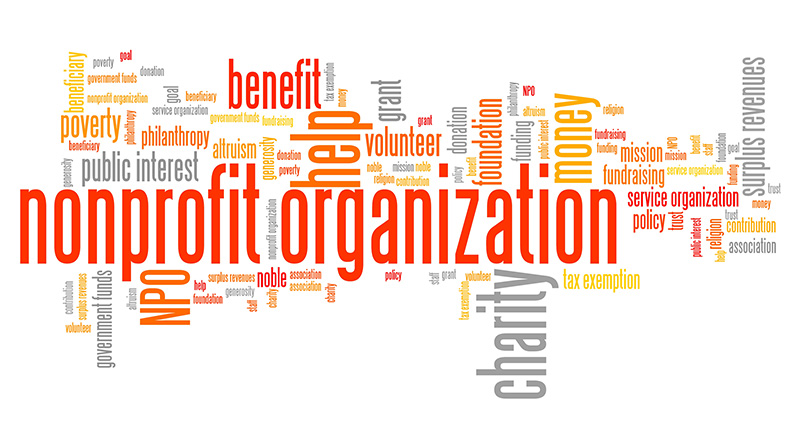Checking Out the Diverse Functions and Responsibilities of a Nonprofit Agency in Addressing Social Issues and Supporting Change
Nonprofit companies work as crucial representatives of adjustment within society, taking on a myriad of social concerns with multifaceted strategies. Their obligations prolong beyond mere service arrangement; they participate in campaigning for, source mobilization, and area outreach, commonly acting as a bridge between marginalized populations and essential solutions. By cultivating partnerships and using culturally relevant approaches, these companies attend to the origin creates of social challenges. Yet, the complexities of their roles raise vital inquiries about efficiency and sustainability. What are the effects of these diverse functions on lasting community effect?
Comprehending Nonprofit Agency Roles
The effectiveness of not-for-profit companies rests on a clear understanding of their diverse duties within culture. These companies function as crucial intermediaries between the general public, exclusive, and governmental markets, attending to different social concerns and supporting for adjustment. Nonprofit agencies frequently function as solution carriers, providing necessary programs and resources to underserved populaces. This role is vital in loading gaps that may exist in civil services, ensuring that susceptible groups have accessibility to required assistance.
Additionally, nonprofits play a necessary function in campaigning for, increasing recognition and influencing plan decisions that influence their neighborhoods. By participating in study and public education, these companies assist form public discussion and advertise notified decision-making - nonprofit agency. They also serve as systems for volunteerism, mobilizing area participants to contribute their time and abilities toward cumulative goals
Moreover, not-for-profit agencies typically work as conveners, uniting diverse stakeholders to cultivate collaboration and collective effect. This collective strategy enhances their ability to address complex social problems properly. Understanding these complex duties is vital for maximizing the potential of not-for-profit agencies in producing lasting social adjustment and boosting general neighborhood wellness.
Neighborhood Interaction and Outreach
Efficient area involvement and outreach are basic components of not-for-profit companies' methods to develop and foster connections depend on within the communities they serve. These initiatives focus on recognizing community needs, promoting understanding of available resources, and motivating involvement in programs created to attend to social concerns. Not-for-profit organizations employ a selection of approaches to involve with neighborhood members, such as workshops, informative sessions, and collective occasions.
Outreach initiatives serve to strengthen relationships with varied populaces, particularly marginalized teams who might face obstacles to accessibility. By using culturally relevant interaction strategies and leveraging regional partnerships, nonprofits can enhance their exposure and show their commitment to area empowerment. This strategy not only grows a feeling of belonging however additionally boosts the probability of sustained interaction.
Furthermore, reliable community interaction surpasses plain participation; it includes proactively listening to neighborhood members' comments and including their insights into program development. This collaborative process makes certain that the services used are receptive, relevant, and customized to the unique difficulties dealt with by the area. Ultimately, fostering solid connections via involvement and outreach can cause even more impactful treatments and a greater collective effort toward advertising favorable social change.
Advocacy and Policy Influence
Advocacy functions as an important system for not-for-profit firms to affect you can look here public policy and drive systemic change. By leveraging their expertise and community insights, these organizations can efficiently stand for marginalized populaces and address pushing social concerns. Nonprofits participate in advocacy with different techniques, including public recognition projects, grassroots mobilization, coalition building, and straight lobbying of policymakers.
With these initiatives, nonprofit companies aim to shape regulations and policy frameworks that line up with next page their objective and the requirements of the neighborhoods they serve. They conduct research, gather data, and share engaging stories to highlight the seriousness of details problems, ensuring that decision-makers are informed and encouraged to act. This procedure not just amplifies the voices of those influenced by social oppressions yet likewise fosters a more fair and inclusive policymaking environment.
Moreover, campaigning for efforts often seek to create lasting structural changes, attending to origin causes instead of simply minimizing symptoms. By prioritizing policy impact, nonprofit firms add to a wider understanding of social challenges and advertise solutions that can bring about sustainable renovations in social well-being. Inevitably, advocacy is basic to the transformative function nonprofits play in creating a just and equitable society.
Fundraising and Source Monitoring
Nonprofit companies depend on robust fundraising and source monitoring techniques to support their advocacy efforts and maintain their goals. By utilizing a multi-faceted technique, nonprofits can minimize the threats associated with dependence on a solitary funding source.
Resource management is similarly crucial, as it includes the critical allocation of both monetary and human sources to optimize impact. Nonprofits must establish spending plans that align with their goals while making sure transparency and liability to stakeholders. This entails normal surveillance of expenditures and changing strategies as needed to optimize source usage.

Collaboration and Collaborations
While numerous companies pursue their goals independently, cooperation and partnerships can significantly improve the effectiveness of nonprofit firms. By working with each other with other nonprofits, federal government entities, and private market organizations, nonprofits can merge resources, share experience, and enhance their influence on social issues. Joint efforts commonly view publisher site bring about ingenious options that might not be achievable separately, leveraging the strengths of each companion to resolve complex difficulties.

Ultimately, effective collaboration requires clear interaction, shared objectives, and shared respect among partners. By embracing a cooperative method, nonprofit companies can produce sustainable networks that not just address prompt social problems however likewise add to long-term systemic change, cultivating a much more equitable society. Through collaboration, nonprofits can thrive and maximize their possibility for purposeful influence.
Verdict
Not-for-profit companies act as vital entities in resolving social problems and fostering modification within communities. With diverse features such as area source, advocacy, and interaction monitoring, these organizations successfully set in motion resources and support for underserved populations. Their collaborative initiatives with numerous stakeholders enhance the capability to influence public plan and advertise architectural modifications. Ultimately, the complex functions of not-for-profit firms substantially contribute to the search of social justice and the enhancement of area wellness.
Recognizing these diverse roles is crucial for optimizing the capacity of not-for-profit firms in producing sustainable social adjustment and boosting total community wellness.
Effective area interaction and outreach are fundamental elements of nonprofit companies' strategies to foster links and build trust fund within the communities they serve. By working together with other nonprofits, government entities, and personal field organizations, nonprofits can merge sources, share knowledge, and amplify their influence on social concerns.Not-for-profit firms serve as vital entities in cultivating and attending to social problems modification within areas - nonprofit agency. Eventually, the multifaceted roles of nonprofit agencies substantially contribute to the search of social justice and the renovation of area wellness